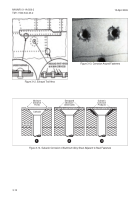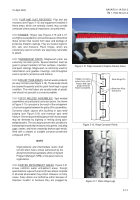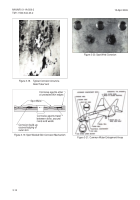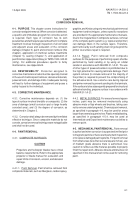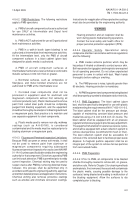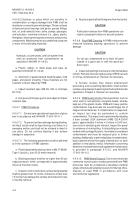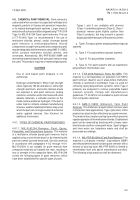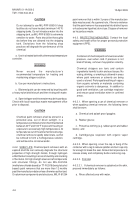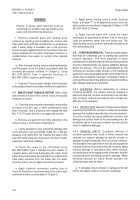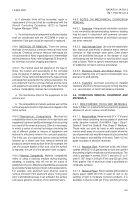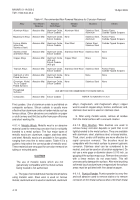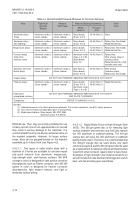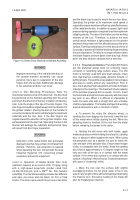TM-1-1500-344-23-2 - Page 82 of 240
4-6
NAVAIR 01-1A-509-2
TM 1-1500-344-23-2
15 April 2009
CAUTION
Do not attempt to use MIL-PRF-83936 if shop
facilities do not have heated (minimum 140
°
F)
stripping tanks. Do not introduce water into the
stripping tank, as MIL-PRF-83936 is extremely
sensitive to water. Parts should be thoroughly
dry before they are allowed into the stripping
tank. Deviations from the following shop
practices will degrade the performance of this
chemical.
a. Use in a heated tank with a thermostat temperature
controller.
WARNING
Never
exceed
the
manufacturer’s
recommended temperature for heating and
maintaining stripper solution.
b. Use per manufacturer’s instructions.
c. Blistered paint can be removed by brushing with
a heavy nylon bristle brush and then rinsing with water.
d. Spent stripper and rinse water may be hazardous.
Check with local hazardous waste management office
prior to disposal.
CAUTION
Chemical paint removers shall be stored in a
protected area, out of direct sunlight, in a
temperature controlled environment maintained
between 40
°
F and 100
°
F to prevent freezing or
exposure to excessively high temperatures. At
temperatures out of the aforementioned range,
chemical removers rapidly deteriorate, cannot
be remixed to form a homogeneous solution,
and will become corrosive/acidic.
4-6.2. SHELF LIFE. Chemical paint removers with an
expired shelf-life can seriously degrade the structural
properties of high strength metals, through hydrogen
embrittlement resulting in a loss of ductility and cracking
of the metal. On high strength steel aircraft components
and structural fittings, do not use MIL-R-81294
(methylene chloride based) or TT-R-2918 (benzyl alcohol
based) paint removers that are more than 12 months
past the manufacture date unless otherwise authorized.
On aluminum components and structures, MIL-R-81294
paint remover that is within 3 years of the manufacture
date may be used. As a general rule, if there is evidence
that the paint remover has separated into distinct layers
or has become liquefied, do not use. Dispose of remover
as hazardous waste.
4-6.3. PROTECTIVE MEASURES. Contact the local
safety and health office for proper personal protective
equipment (PPE).
WARNING
Containers of chemical paint removers are under
pressure, even when cold. If pressure is not
bled off slowly, remover may splatter violently.
Chemical strippers are toxic and contain
ingredients harmful to skin and eye tissues. No
eating, drinking, or smoking is allowed in areas
where paint removers or solvents are being
used or stored. Prolonged breathing of vapors
from organic solvents or materials containing
organic solvents is dangerous. In addition to
good tank ventilation, use cartridge respirator
and ensure good ventilation when in confined
areas.
4-6.3.1. When opening a can of chemical remover or
when applying chemical remover, the following items
shall be worn:
a. Chemical and splash proof goggles;
b. Rubber gloves;
c. Protective clothing (e.g. rubber apron and rubber
boots); and
d. Cartridge-type respirator with organic vapor
cartridge.
4-6.3.2. When opening, cover the cap or bung of the
container with a rag to reduce splatter and turn cap only
far enough to break the seal. Allow internal pressure to
release slowly and completely before removing cap.
4-6.3.3. First Aid.
4-6.3.3.1. If chemical remover is splashed on the skin,
proceed immediately as follows:
a. Rinse affected area with water.
Back to Top

